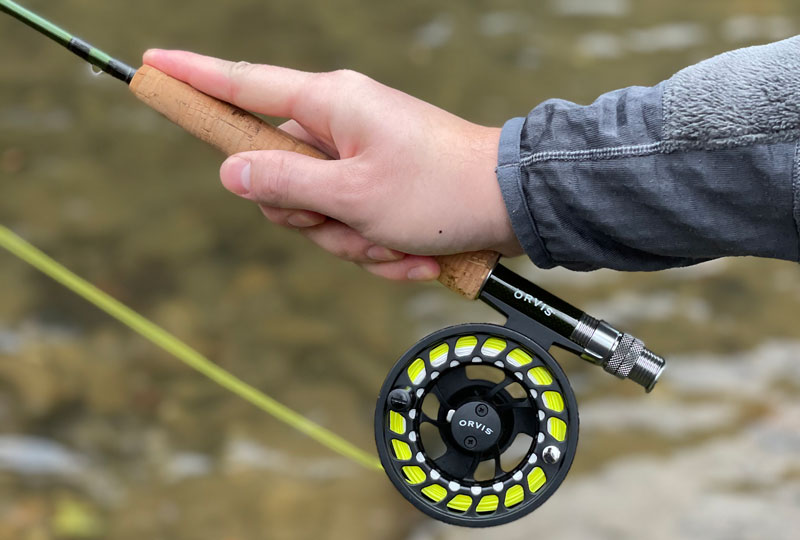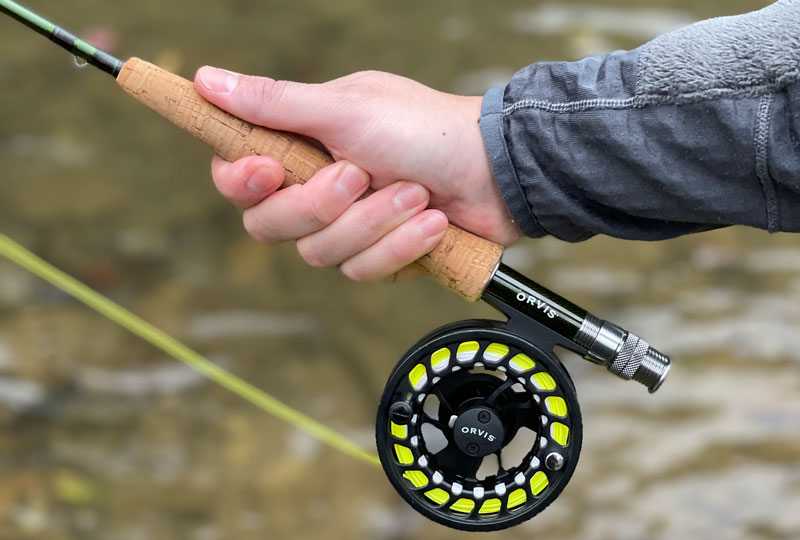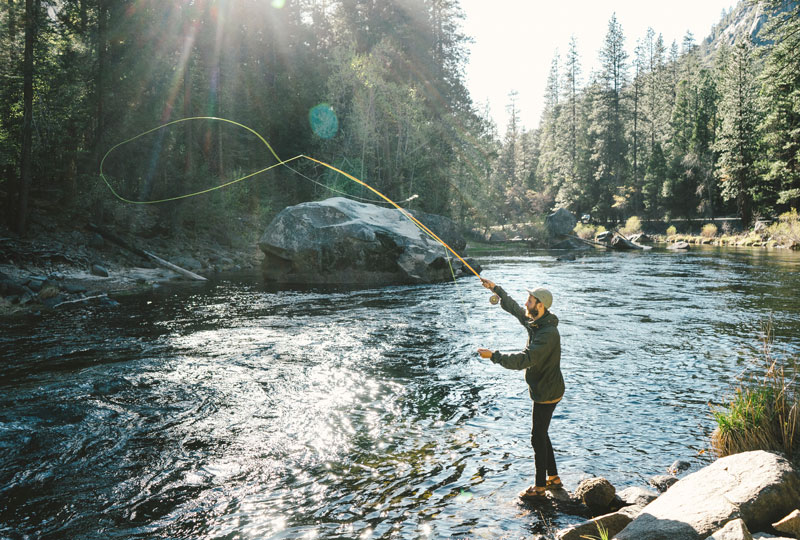Pay attention to your form. These fly-fishing orthopedic surgeons offer advice on how to avoid next-day pain.
Fly-fishing is so serene. Standing in the fresh air and peaceful quiet of a river or by the shore, casting lines in graceful arcs to place a fly in front of a beautiful, hungry fish – this is a sport revered for its precision, its meditative quality and its pristine scenery.
Alas, hours or days after casting lines in their favorite rivers, many fly-fishing enthusiasts deal with painful shoulders, arms, elbows or wrists. Perhaps that’s not surprising, as recreational fly-fishers may make hundreds of casts in a day, handling rods up to 11 feet long and often weighted with special line or heavy flies. But pain sure takes some of the glow off a great fishing trip.
Two sports medicine and orthopedic surgery doctors now offer some advice for avoiding or minimizing your risk of feeling that day-after pain in your casting arm. Check your form, they say: The way you grip your rod and the way you cast can affect whether you are sore during the days – possibly even a week – after a fly-fishing trip.
The Kuhns are a fly-fishing family. Jed Kuhn, M.D., MS, a shoulder surgeon and sports medicine specialist at Vanderbilt University Medical Center, and one of his sons, Andrew Kuhn, M.D., an orthopedic surgery resident at Washington University and a graduate of Vanderbilt University School of Medicine, authored a scientific study of recreational fly-fishers. The study focuses on the type of pain they tend to feel in their shoulders or arms after a day of casting. They asked fly-fishers from many areas of the country to respond to an online survey that gathered a great deal of detail about health and casting habits. Survey questions asked about everything from age, left- vs. right-handedness, whether the participant had a history of orthopedic problems in their arms and shoulders, and where exactly they were sore after a trip.
“How many times did they go out fly-fishing a year? How many casts did they make every outing?” Andrew Kuhn recalled the survey questions. “Then we looked at equipment. What kind of rod do they have? What’s the weight of the rod? What kind of flies do they use?”
The Orthopedic Journal of Sports Medicine published the resulting father-son study on Oct. 21, 2020.
“Fly-fishing is technical and requires rhythmic, coordinated movements to successfully cast a fly line, and studies have shown that the biomechanical demands of fly-casting may cause some individuals to develop shoulder, elbow and wrist injuries or pain,” the Kuhns reported. “Interestingly, the nuances among different fly-casting techniques, styles and equipment may predispose individuals to certain injuries.”
Indeed, the study revealed that of the 162 participants, 59 (36.4%) felt moderate pain in the shoulder, arm, elbow or wrist after fly-fishing. Most of them were uncomfortable for anywhere from a few hours to up to a week later.
The Kuhns offer three main tips for avoiding post-fishing pain:
1. Grip is a big factor
A big takeaway of this study: Grip matters.
“Pain and soreness was associated with casting in an elliptical/sidearm fashion, compared with overhead or two-handed casting using a weighted line or added weight, and with grip styles where the hand was pronated (rotated inward) compared with being in a more neutral position,” the Kuhns wrote.
Everyone who described their grip as holding the rod with their finger on top reported upper-extremity pain after fly-fishing.

Of those who said they hold their rod with their thumb on top, 34% reported being sore.

Just 30% of those using a V-style grip felt pain later.

“Imagine you’re holding a tennis racket and you hold it with your finger on top, or you could hold it with your thumb on top,” John Kuhn explained. “With the thumb on top, it produced less injury.”
2. Overhand vs. sidearm casting
The Kuhns recommend that fly-fishers cast overhand. If elliptical or sidearm casting is necessary – to avoid tree branches overhead, for example – moving to a different spot to do some overhand casting for a while may reduce the risk of pain later.
3. Added weight
“Last, recreational fly-fishers should be mindful of their casting technique and frequency when using weighted line or added weight (split-shot, weighted heads, etc.), as this has been shown to cause an increased prevalence of upper extremity pain/soreness as well,” the study suggested.
Andew Kuhn has taken his own advice about monitoring his casting form and adjusting when something starts to ache.
“We were recently on a guided trip on a small stream in the mountains where there was a lot of brush and low-hanging trees,” he said. That meant he couldn’t cast overhand without tangling line in the trees. “I was casting sidearm all day, throwing hundreds of casts, and ended up walking to a spot upstream that was more open so I could cast overhand.”
His father says, “The way I learned how to hold my rod, is the way that is associated with fewer injuries. But I was actually on a trip (recently) with a guide and was talking about the study and he completely agreed. He says, ‘Oh yeah. You never want to hold your rod with your finger like this’ ” – meaning, on top of the rod.
Both the Kuhns hope their study results will help other fly-fishers enjoy this sport with less pain, because it’s such a positive experience.
“In addition to the physical benefits of being an outdoor recreational sport,” they wrote, “many anglers describe fly-fishing as a religious, spiritual or sacred practice.”



